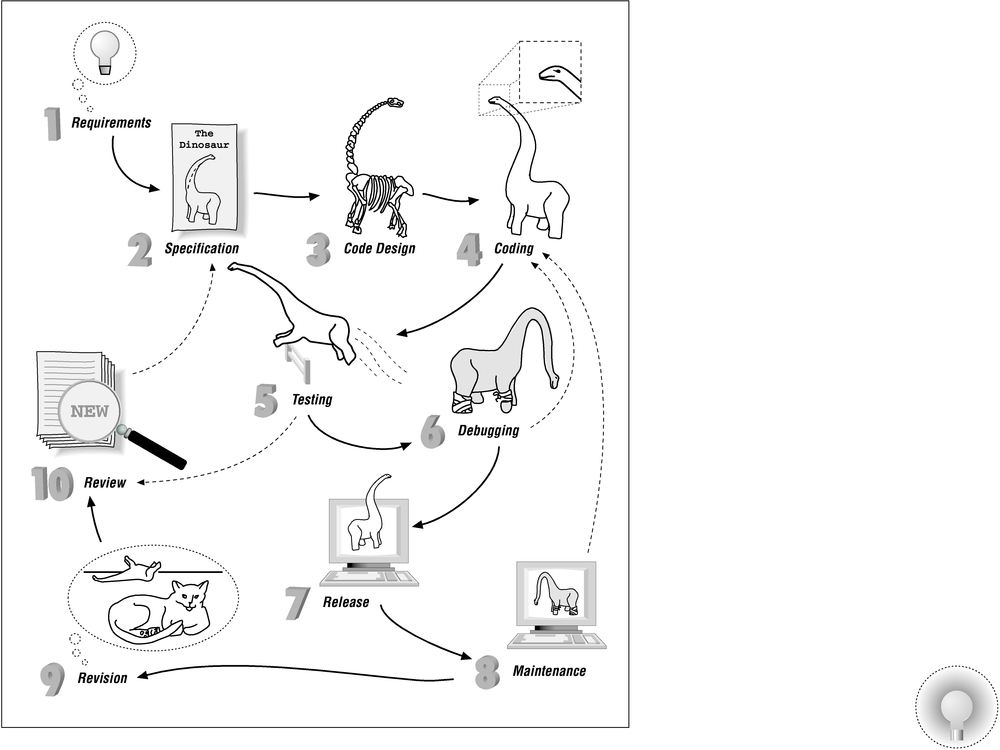Chapter 7. Programming Process
It’s just a simple matter of programming.
Programming is more than just writing code. Software has a life cycle. It is born, grows up, becomes mature, and finally dies, only to be replaced by a newer, younger product. Figure 7-1 illustrates the life cycle of a program. Understanding this cycle is important because, as a programmer, you will spend only a small amount of time writing new code. Most programming time is spent modifying and debugging existing code. Software does not exist in a vacuum; it must be documented, maintained, enhanced, and sold. In this chapter, we will take a look at a small programming project using one programmer. Larger projects that involve many people will be discussed in Chapter 18. Although our final code is less than 100 lines, the principles used in its construction can be applied to programs with thousands of lines of code.
 |
The major steps in making a program are:
Requirements. Programs start when someone gets an idea and starts to implement it. The requirement document describes, in very general terms, what is wanted.
Program specification. The specification is a description of what the program does. In the beginning, a preliminary specification is used to describe what the program is going to do. Later, as the program becomes more refined, so does ...
Get Practical C Programming, 3rd Edition now with the O’Reilly learning platform.
O’Reilly members experience books, live events, courses curated by job role, and more from O’Reilly and nearly 200 top publishers.

